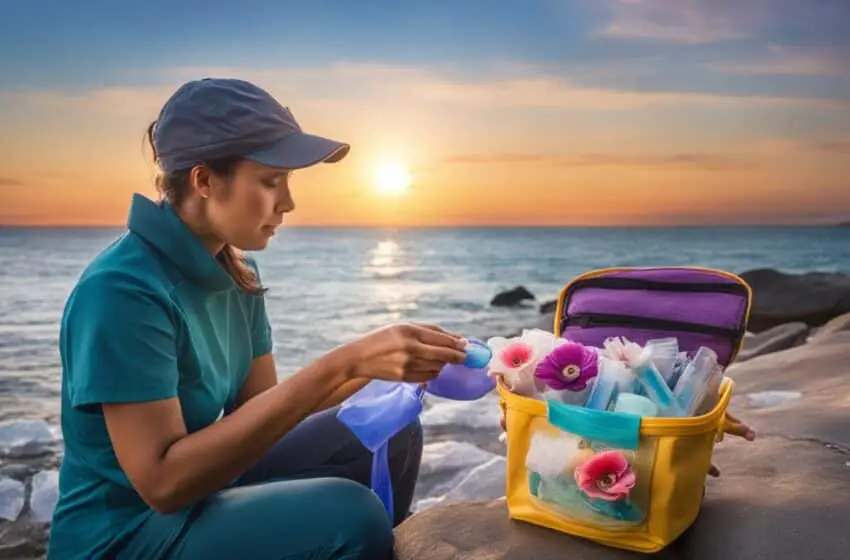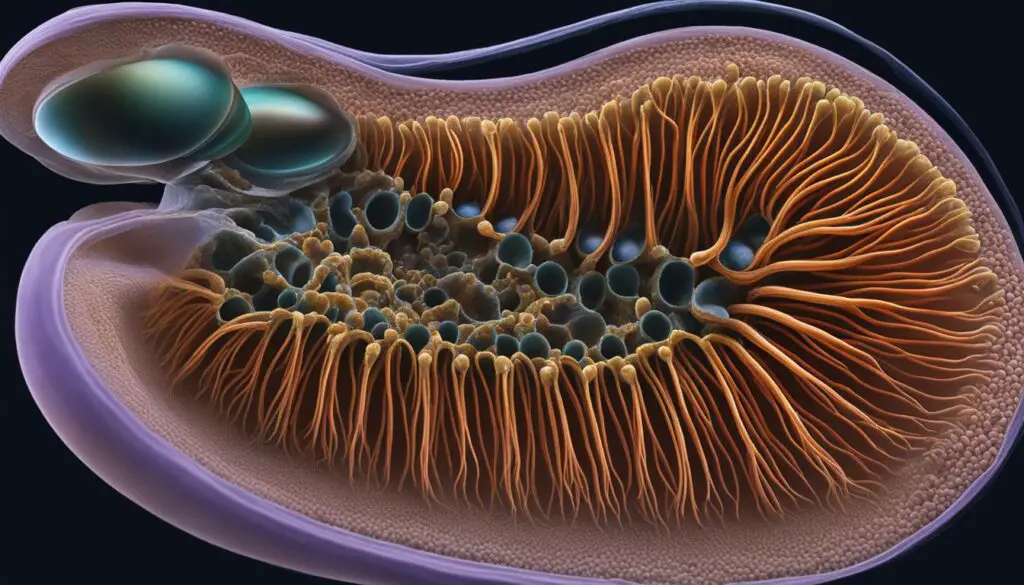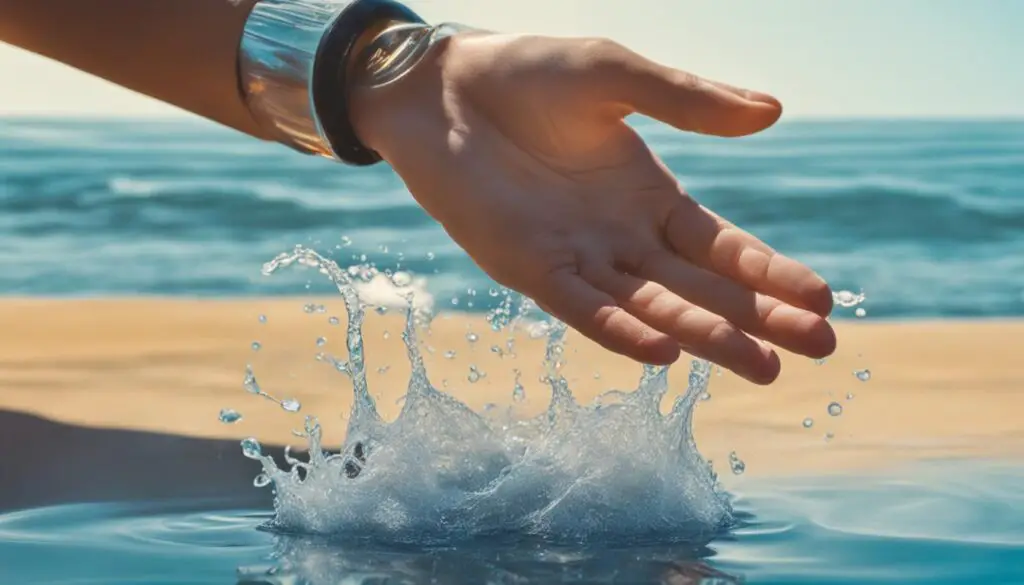Effective Treatment for Anemone Stings: Remedies and Relief

Anemone stings treatment and remedies: Anemone stings can range from mild annoyance to severe pain or even danger. But fear not, there are effective treatments and remedies available to help you find relief and tank tops. In this article, I will provide you with essential information on how to treat anemone stings and alleviate the discomfort they cause.
Key Takeaways:
- Understanding the sensitivity of an individual to bee or wasp stings is important when handling cnidarians.
- Removing any nematocysts stuck to the skin and rinsing the area with saltwater are crucial steps in treating anemone stings.
- Using remedies like plain meat tenderizer or white vinegar can help break down the venom and provide relief.
- Topical hydrocortisone cream, ice, or diphenhydramine can help alleviate pain and manage allergic reactions.
- Seeking medical attention is necessary if experiencing severe symptoms or uncertainty about the severity of the sting.
Understanding Cnidarian Stings and Nematocysts
Cnidarians, such as anemones, jellyfish, corals, and hydroids, possess specialized stinging cells known as nematocysts or cnidocysts. These cells serve as effective defense mechanisms or tools for immobilizing prey. Although different types of nematocysts have varying functions, they all operate in a similar fashion. Imagine nematocysts as spring-loaded harpoons that discharge venom upon trigger, either through touch or a chemical change. While some cnidarians have nematocysts harmless to humans but effective against their prey, others, like the sea wasp or box jellyfish, possess highly venomous nematocysts that can prove fatal.
Understanding the structure and discharge mechanism of nematocysts is crucial for the treatment and prevention of cnidarian stings. These nematocysts consist of a coiled thread, barbs, and venom-filled capsules. This venom consists of a complex mixture of toxins that can cause pain, inflammation, allergic reactions, and, in severe cases, systemic symptoms.

“The structure and discharge mechanism of nematocysts play a crucial role in the severity of cnidarian stings. Understanding these mechanisms can aid in developing effective treatment and prevention strategies.”
Types of Nematocysts:
Cnidarians possess different types of nematocysts, each adapted for specific purposes. Some nematocysts are equipped with venoms that target specific prey, allowing cnidarians to immobilize or kill their victims quickly. Others have nematocysts designed to provide protection against potential threats, including predators or competitors. It is important to note that certain cnidarians possess nematocysts capable of firing multiple times, increasing the potency of their venom. The sea wasp, for example, has nematocysts that can be triggered repeatedly, making it one of the most dangerous creatures in the ocean.
“The diversity and functionality of nematocysts in cnidarians highlight the complexity of these organisms’ stinging capabilities and the importance of understanding them for effective treatment and prevention of stings.”
| Type of Nematocyst | Function |
|---|---|
| Penetrant | Designed to pierce and inject venom into prey or threats |
| Glutinant | Produces sticky threads to immobilize prey |
| Volutin | Stores energy-rich compounds for future use |
| Desmoneme | Used for defense against predators or competitors |
Understanding the diverse capabilities and variations of nematocysts allows for a more comprehensive approach to treating and preventing cnidarian stings. By recognizing the nematocyst types present in specific cnidarians, researchers and medical professionals can develop specialized treatments and protective measures to mitigate the effects of stings and reduce the risk posed by these fascinating but potentially dangerous creatures.
Treating Anemone Sting
Anemone stings can be painful and cause discomfort, but with proper care, you can effectively treat and manage the symptoms. When dealing with an anemone sting, the first step is to remove any tentacles or nematocysts stuck to the skin. This can be done by gently rubbing the area with sand, a paper towel, or the edge of a credit card. It’s important to avoid using bare hands to prevent further exposure to the venom.
After removing the tentacles, it’s crucial to rinse the affected area with saltwater. This helps to deactivate any untriggered nematocysts and prevent them from firing. Then, clean the area well with warm freshwater to remove any remaining venom or debris. This step is essential in preventing infection and promoting faster healing.
Home Remedies
There are several home remedies that can help soothe anemone stings. One effective remedy is to apply a paste of plain meat tenderizer to the sting site. Meat tenderizer contains enzymes that can break down the venom and alleviate pain. Anemone stings treatment and remedies Another option is to use a white vinegar rinse, as vinegar can neutralize the venom and provide relief. Applying a topical hydrocortisone cream can help reduce inflammation and itching, while using ice packs can numb the area and ease discomfort. It’s also advisable to take oral antihistamines like diphenhydramine to manage any allergic reactions.
If you experience severe symptoms such as difficulty breathing, chest pain, or a severe allergic reaction, it’s crucial to seek immediate medical attention. Additionally, if you are unsure about the severity of the sting or if symptoms persist or worsen, it’s best to consult a healthcare professional for proper evaluation and treatment.
| Treating Anemone Sting: Do’s | Treating Anemone Sting: Don’ts |
|---|---|
|
|
Remember, prompt and appropriate treatment is essential in managing anemone stings effectively. By following these guidelines and seeking medical assistance when necessary, you can alleviate symptoms and promote a swift recovery.

Conclusion
Anemone stings can range from mild to severe, and the treatment depends on the individual’s sensitivity. Promptly removing nematocysts, rinsing the area, and cleaning it well are essential steps in treating anemone stings.
Using remedies like meat tenderizer, white vinegar, hydrocortisone cream, ice, and diphenhydramine can help manage pain and allergic reactions.
However, it’s important to prioritize seeking professional medical attention in cases of severe symptoms or uncertainty about the severity of the sting. Awareness and caution can help prevent anemone stings, and understanding the structure and functioning of nematocysts can aid in effective treatment and prevention strategies.
FAQ
What should I do if I get stung by an anemone?
If you get stung by an anemone, the first step is to remove any nematocysts stuck to your skin. Rinse the area with saltwater to avoid triggering more nematocysts. Clean the area with warm freshwater and consider using a paste of plain meat tenderizer or a white vinegar rinse to break down the venom. Apply a topical hydrocortisone cream and use ice to relieve pain and inflammation. Seek medical attention if you experience severe symptoms.
Are anemone stings similar to bee or wasp stings?
Yes, the venom in most stinging cnidarians, including anemones, is similar to that of a bee or wasp. If you know you have a sensitivity to bee or wasp stings, it’s important to be cautious around cnidarians and take appropriate measures to prevent and treat stings.
Should I seek medical attention for an anemone sting?
If you experience severe symptoms, such as difficulty breathing, chest pain, or signs of an allergic reaction, it is crucial to seek immediate medical attention. Additionally, if you are unsure about the severity of the sting or if symptoms persist or worsen, it is recommended to consult a healthcare professional.
What can I do to prevent anemone stings?
To prevent anemone stings, it is important to be aware of your surroundings when swimming or diving. Avoid touching or getting too close to cnidarians, including anemones, jellyfish, and corals. Wearing protective clothing, such as a wetsuit or gloves, can also provide an additional layer of defense against stings.



